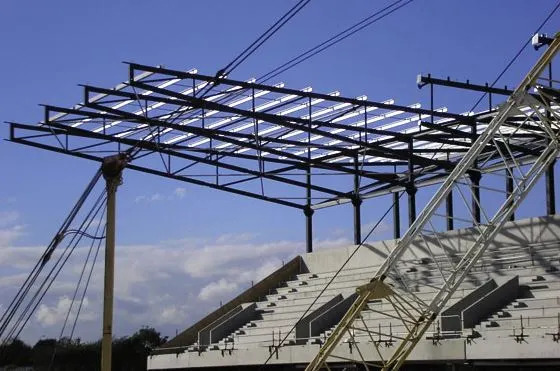In the realm of structural engineering, the cantilever truss design stands out as an engineering marvel that seamlessly blends elegance with functionality. This innovative structural system, characterized by its projecting horizontal elements, has found applications in a wide range of architectural and engineering projects. This article explores the principles, advantages, and applications of cantilever truss design, shedding light on its significance in modern construction.
Defining Cantilever Truss:
A cantilever truss is a structural framework that features a horizontal beam (the cantilever) extending outward from a fixed support, with no additional vertical supports beneath the free end. This unique design allows for extended overhangs and creates visually striking structures that defy conventional engineering expectations.
Principles of Cantilever Truss Design:
Cantilever truss design relies on the principles of structural mechanics to ensure stability and load-bearing capacity. The fixed support at one end of the truss provides a counterforce to the loads applied to the extended cantilever, allowing for the creation of overhangs and projecting elements. Precise engineering calculations are essential to determine the size, materials, and load-carrying capacity of the cantilever truss.
Structural Components:
The basic components of a cantilever truss include the cantilever itself, the fixed support (often a column or wall), and the connecting members that make up the truss structure. These connecting members, typically arranged in a triangular configuration, distribute loads efficiently and enhance the overall stability of the cantilever truss.
Applications in Bridge Design:
Cantilever truss design has found widespread application in the construction of bridges. The extended cantilever arms allow for the creation of expansive bridge decks without additional support structures in the middle of the span. This design is particularly advantageous for spanning bodies of water or deep valleys. Where traditional support options may be limited.
Architectural Aesthetics:
The aesthetic appeal of cantilever truss design is undeniable. Architects often leverage the dramatic and visually striking nature of cantilevered structures to create iconic landmarks. From architectural features on buildings to observation decks and walkways, cantilever trusses add a touch of sophistication and modernity to various architectural designs.
Building Overhangs and Balconies:
In building construction, cantilever truss design is employed to create overhangs and balconies that extend beyond the main structural footprint. This design allows for the creation of sheltered outdoor spaces, emphasizes architectural features, and maximizes usable floor space. Cantilevered balconies, in particular, offer residents panoramic views and a unique living experience.
Challenges and Structural Considerations:
While cantilever truss design offers numerous advantages, it comes with its own set of challenges. Engineers must carefully consider factors such as material strength, load distribution, and potential for deflection. Advanced engineering techniques, including finite element analysis, are often employed to ensure that cantilever trusses meet safety standards and performance requirements.
Sculptural and Artistic Installations:
Cantilever truss design transcends traditional construction applications and increasingly utilized in artistic and sculptural installations. The inherent beauty of the cantilevered form allows artists and designers to create captivating structures that challenge perceptions and celebrate the marriage of engineering and art.
Materials and Sustainability:
Cantilever trusses can constructed using various materials, including steel, concrete, and advanced composite materials. The choice of materials often influenced by factors such as structural requirements, aesthetics, and sustainability goals. The use of sustainable materials and construction practices aligns with contemporary principles of eco-friendly design.
Innovations in Cantilever Truss Technology:
Advancements in construction technology and materials have paved the way for innovative cantilever truss designs. From smart materials with self-monitoring capabilities to modular construction techniques, engineers are continuously pushing the boundaries of what is possible with cantilever truss technology.
Conclusion:
The cantilever truss design stands as a testament to the harmonious convergence of engineering precision and architectural creativity. Its applications in bridges, buildings, and artistic installations showcase the versatility and adaptability of this structural system. As the field of structural engineering continues to evolve, cantilever trusses remain a symbol of ingenuity. Pushing the boundaries of what can be achieved in creating aesthetically pleasing and functionally superior structures.

